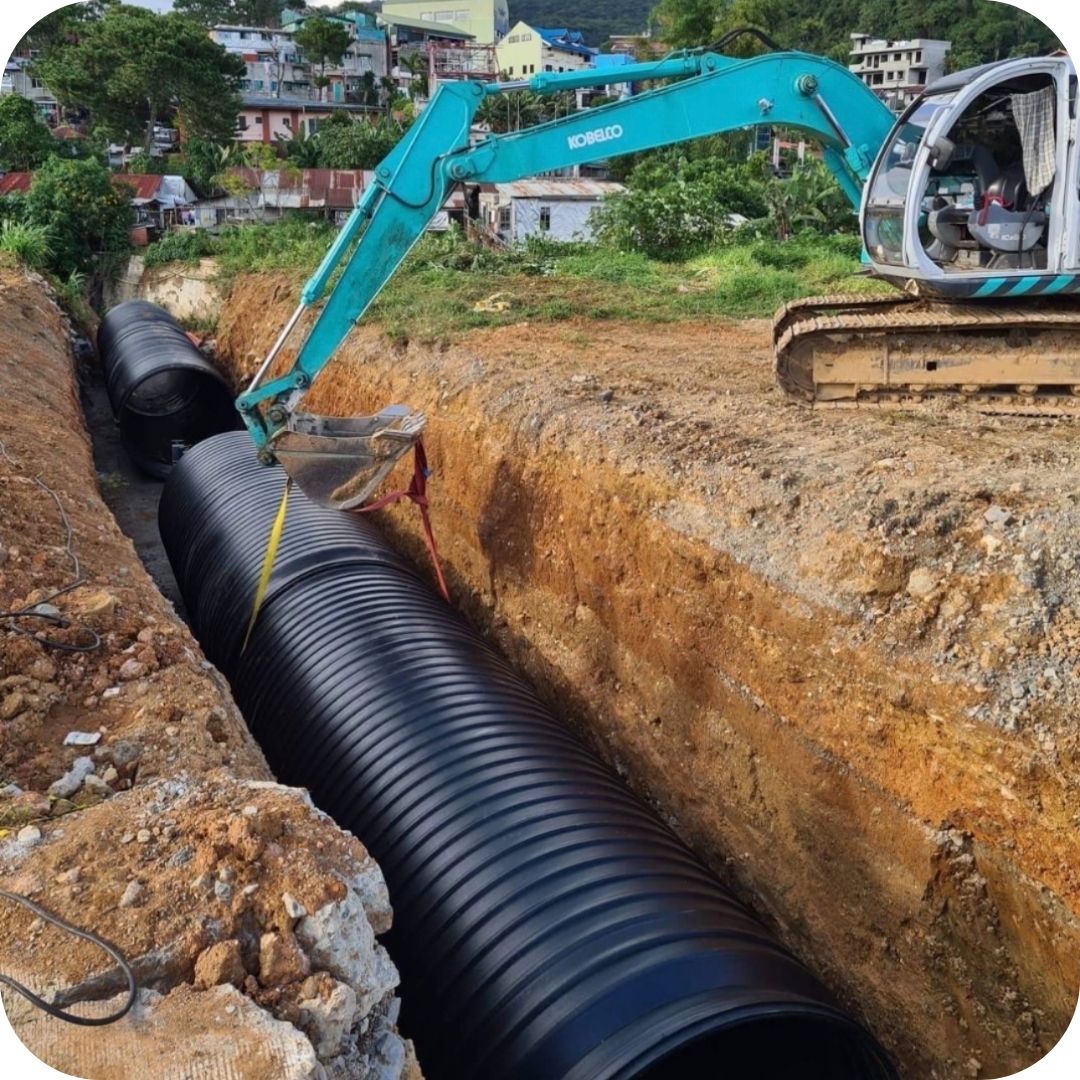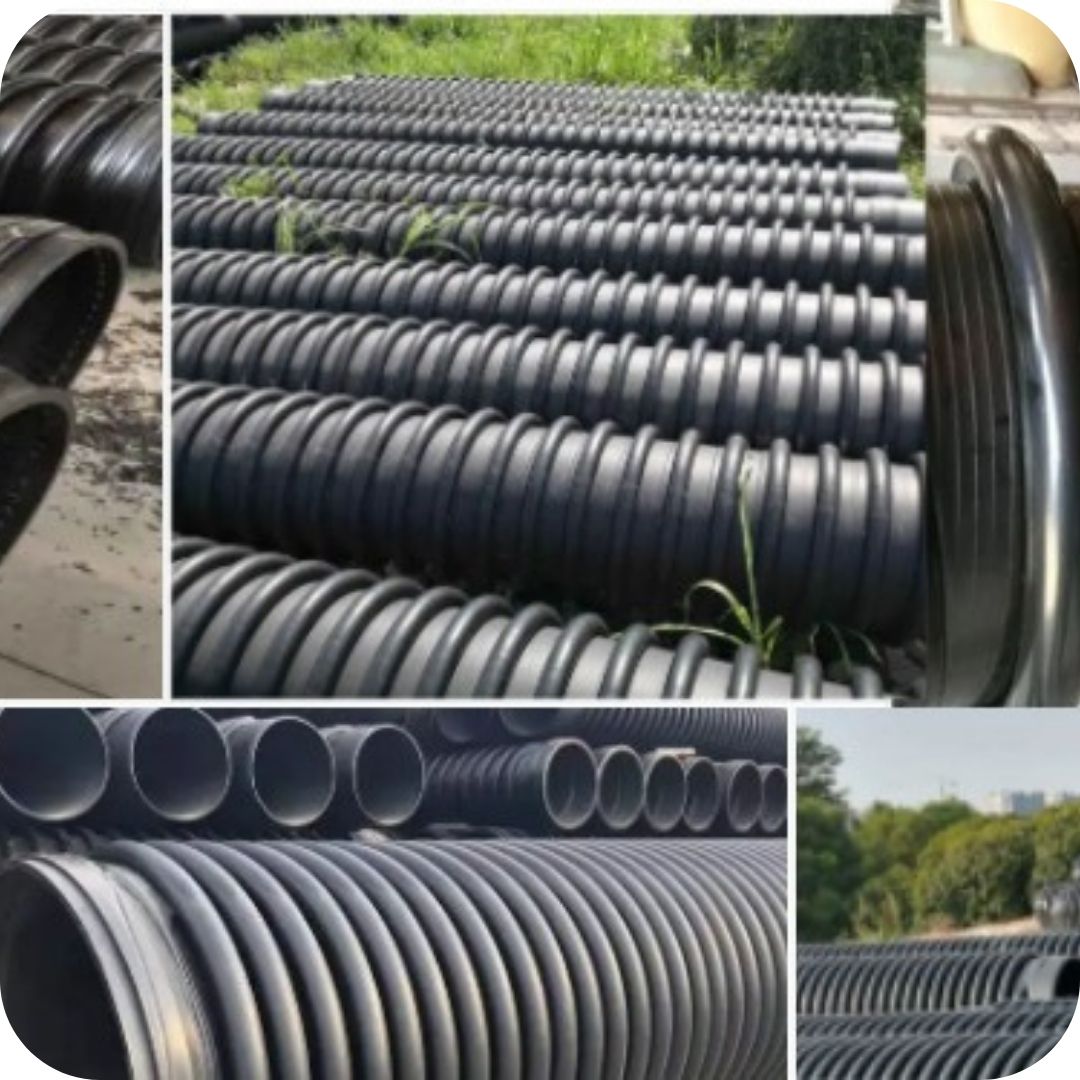Usage of Drainage Pipes
Drainage pipes, made from high-density polyethylene (HDPE), have become an indispensable part of modern infrastructure and construction projects due to their exceptional resistance, flexibility, and durability. These pipes are designed to manage excess water across various terrains and conditions, providing efficient drainage solutions and water protection. Here is a more detailed proposal of their application in different areas:
Households
In households, drainage pipes play a key role in protecting yards, gardens, and foundations of residential buildings from potential damage caused by standing water. These pipes efficiently collect and divert excess water, rainwater, and water from irrigation systems, preventing soil saturation and protecting foundations from erosion. A drainage system around the house, especially in areas prone to flooding or high soil moisture, can significantly reduce the risk of basement floods and structural damage.
Industrial Complexes
In industrial zones, HDPE drainage pipes are essential for efficiently managing waste and surface water. They enable safe water drainage from production facilities, warehouses, and other buildings, protecting them from floods and water damage. Additionally, drainage systems in industrial complexes play a vital role in preventing contamination of surrounding land and waterways, managing industrial wastewater sustainably and safely.
Public Areas
In public areas such as parks, sports fields, playgrounds, and other recreational spaces, drainage pipes ensure these areas remain usable and safe even during rainy periods. Efficient drainage systems prevent the formation of puddles and mud, allowing citizens to enjoy these spaces regardless of weather conditions. Additionally, proper drainage helps preserve vegetation and landscaping, preventing water oversaturation that can lead to plant decay and soil erosion.









